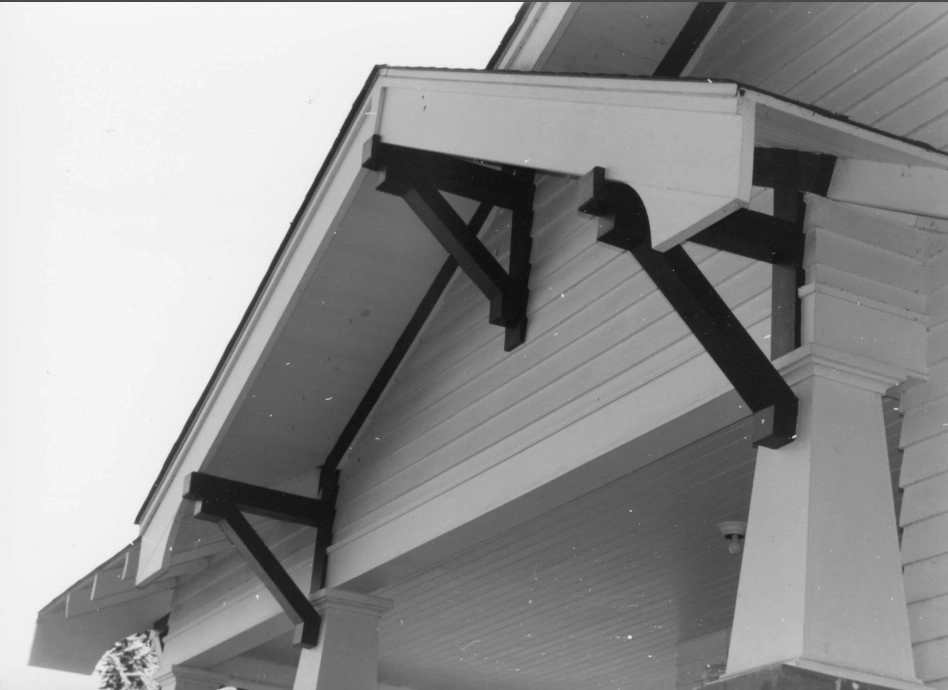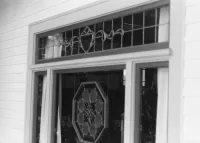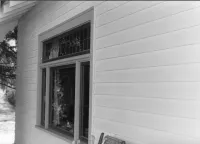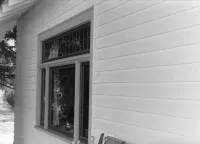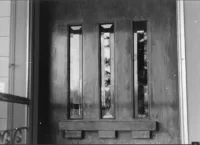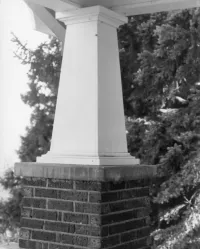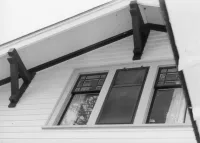Share what you know,
and discover more.
Share what you know,
and discover more.
Mar 09, 1995
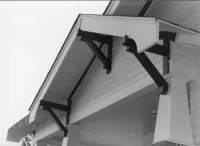
-

- Charmaine Bantugan
National Register of Historic Places - Sorenson House (Sorenson--Murry House;41-408W)
Statement of Significant: The home was built in 1922 by Mr. James "Jim" Sorenson on a gift of land from his father-in-law, Alfred Pearson. Mr. Sorenson began his partnership with William Schrotke in a woodworking, cabinet-making, and contracting business in 1910 (the year he married Mary Pearson). He became a well-respected builder of many Craftsman style homes in Bothell which were popularized in pattern books of the time. None of the others that remain, however, embodies the same level of style or scale as his own home. His talent and success at his trade are most evident in his beautifully executed home. The craftsmanship in the building reflects Mr. Sorenson's background as a carpenter (from Denmark where he learned his trade in the ship building industry). Mr. Sorenson remained a respected member of the community until his death from tuberculosis in 1938. The Historic Resources of Bothell, Washington, Multiple Resources Property Documentation Form, states that in the early twentieth century, as logging declined in importance, Bothell's agricultural economy grew rapidly. Bothell increasingly functioned as a service center for the surrounding farmlands and did so until after World War II. Bothell's population growth, its role as a farm service center, and its position along the Pacific Highway led to a small building boom in the early twentieth century and increasingly these new houses were built in the Craftsman and bungalow modes: Craftsman style housing seemed appropriate in Bothell, a community located in an intermediate zone between the large Seattle-Everett urban area and the rich agricultural hinterlands. The Sorenson house is most representative of the upper end of middle-class housing in Bothell during the 1920s and '30s in contrast to the more traditional style of the middle-range Kirk House or the smaller-scale farm house style of the Bates-Tanner property. The interior of the Sorenson Residence is a stunning and most representative example of the Arts and Crafts style in the City of Bothell today. The detailed fir woodwork; intricate, inlaid flooring details; beamed ceilings; and built-in cabinetry all bespeak the fine craftsmanship of the time. Mr. Sorenson, the builder, seemingly used all his artistry in his own home to create a truly elegant setting. Interior walls are finished with plaster or wood paneling. The upper level is a finished attic ceilings in some rooms and picture molding. The dormered room on the south side was Mr. Sorenson's office at his home and the walls and sloping ceiling are finished with wood paneling reminiscent of a ship's cabin. Many of the original glass door knobs, light fixtures and brass, push- button switch plates, and metal heating grills remain. The dining and living rooms best illustrate the exquisite finish carpentry skills of Mr. Sorenson. The dining room has a built-in sideboard with a mirrored backboard and leaded, beveled glass cabinet doors with glass knobs. Both rooms have inlaid wood flooring. There is an elaborate beamed ceiling in the dining area and built-in bookcases flanking the fireplace in the living room with leaded glass doors and glass knobs. The kitchen has been modified to accommodate Mrs. Murray who was under five feet tall. The kitchen and hall ceilings have been lowered, but the original cabinets and woodwork have been left extending above the current ceilings and could easily be restored. The house is an excellent example of the residential architecture identified in Bothell's Multiple Property Documentation and meets the registration requirements for residential property types outlined in that document.
National Register of Historic Places - Sorenson House (Sorenson--Murry House;41-408W)
Statement of Significant: The home was built in 1922 by Mr. James "Jim" Sorenson on a gift of land from his father-in-law, Alfred Pearson. Mr. Sorenson began his partnership with William Schrotke in a woodworking, cabinet-making, and contracting business in 1910 (the year he married Mary Pearson). He became a well-respected builder of many Craftsman style homes in Bothell which were popularized in pattern books of the time. None of the others that remain, however, embodies the same level of style or scale as his own home. His talent and success at his trade are most evident in his beautifully executed home. The craftsmanship in the building reflects Mr. Sorenson's background as a carpenter (from Denmark where he learned his trade in the ship building industry). Mr. Sorenson remained a respected member of the community until his death from tuberculosis in 1938. The Historic Resources of Bothell, Washington, Multiple Resources Property Documentation Form, states that in the early twentieth century, as logging declined in importance, Bothell's agricultural economy grew rapidly. Bothell increasingly functioned as a service center for the surrounding farmlands and did so until after World War II. Bothell's population growth, its role as a farm service center, and its position along the Pacific Highway led to a small building boom in the early twentieth century and increasingly these new houses were built in the Craftsman and bungalow modes: Craftsman style housing seemed appropriate in Bothell, a community located in an intermediate zone between the large Seattle-Everett urban area and the rich agricultural hinterlands. The Sorenson house is most representative of the upper end of middle-class housing in Bothell during the 1920s and '30s in contrast to the more traditional style of the middle-range Kirk House or the smaller-scale farm house style of the Bates-Tanner property. The interior of the Sorenson Residence is a stunning and most representative example of the Arts and Crafts style in the City of Bothell today. The detailed fir woodwork; intricate, inlaid flooring details; beamed ceilings; and built-in cabinetry all bespeak the fine craftsmanship of the time. Mr. Sorenson, the builder, seemingly used all his artistry in his own home to create a truly elegant setting. Interior walls are finished with plaster or wood paneling. The upper level is a finished attic ceilings in some rooms and picture molding. The dormered room on the south side was Mr. Sorenson's office at his home and the walls and sloping ceiling are finished with wood paneling reminiscent of a ship's cabin. Many of the original glass door knobs, light fixtures and brass, push- button switch plates, and metal heating grills remain. The dining and living rooms best illustrate the exquisite finish carpentry skills of Mr. Sorenson. The dining room has a built-in sideboard with a mirrored backboard and leaded, beveled glass cabinet doors with glass knobs. Both rooms have inlaid wood flooring. There is an elaborate beamed ceiling in the dining area and built-in bookcases flanking the fireplace in the living room with leaded glass doors and glass knobs. The kitchen has been modified to accommodate Mrs. Murray who was under five feet tall. The kitchen and hall ceilings have been lowered, but the original cabinets and woodwork have been left extending above the current ceilings and could easily be restored. The house is an excellent example of the residential architecture identified in Bothell's Multiple Property Documentation and meets the registration requirements for residential property types outlined in that document.
Mar 09, 1995
National Register of Historic Places - Sorenson House (Sorenson--Murry House;41-408W)
Statement of Significant:The home was built in 1922 by Mr. James "Jim" Sorenson on a gift of land from his father-in-law, Alfred Pearson. Mr. Sorenson began his partnership with William Schrotke in a woodworking, cabinet-making, and contracting business in 1910 (the year he married Mary Pearson). He became a well-respected builder of many Craftsman style homes in Bothell which were popularized in pattern books of the time. None of the others that remain, however, embodies the same level of style or scale as his own home. His talent and success at his trade are most evident in his beautifully executed home. The craftsmanship in the building reflects Mr. Sorenson's background as a carpenter (from Denmark where he learned his trade in the ship building industry). Mr. Sorenson remained a respected member of the community until his death from tuberculosis in 1938.
The Historic Resources of Bothell, Washington, Multiple Resources Property Documentation Form, states that in the early twentieth century, as logging declined in importance, Bothell's agricultural economy grew rapidly. Bothell increasingly functioned as a service center for the surrounding farmlands and did so until after World War II. Bothell's population growth, its role as a farm service center, and its position along the Pacific Highway led to a small building boom in the early twentieth century and increasingly these new houses were built in the Craftsman and bungalow modes: Craftsman style housing seemed appropriate in Bothell, a community located in an intermediate zone between the large Seattle-Everett urban area and the rich agricultural hinterlands.
The Sorenson house is most representative of the upper end of middle-class housing in Bothell during the 1920s and '30s in contrast to the more traditional style of the middle-range Kirk House or the smaller-scale farm house style of the Bates-Tanner property.
The interior of the Sorenson Residence is a stunning and most representative example of the Arts and Crafts style in the City of Bothell today. The detailed fir woodwork; intricate, inlaid flooring details; beamed ceilings; and built-in cabinetry all bespeak the fine craftsmanship of the time. Mr. Sorenson, the builder, seemingly used all his artistry in his own home to create a truly elegant setting. Interior walls are finished with plaster or wood paneling. The upper level is a finished attic ceilings in some rooms and picture molding. The dormered room on the south side was Mr. Sorenson's office at his home and the walls and sloping ceiling are finished with wood paneling reminiscent of a ship's cabin. Many of the original glass door knobs, light fixtures and brass, push- button switch plates, and metal heating grills remain.
The dining and living rooms best illustrate the exquisite finish carpentry skills of Mr. Sorenson. The dining room has a built-in sideboard with a mirrored backboard and leaded, beveled glass cabinet doors with glass knobs. Both rooms have inlaid wood flooring. There is an elaborate beamed ceiling in the dining area and built-in bookcases flanking the fireplace in the living room with leaded glass doors and glass knobs. The kitchen has been modified to accommodate Mrs. Murray who was under five feet tall. The kitchen and hall ceilings have been lowered, but the original cabinets and woodwork have been left extending above the current ceilings and could easily be restored.
The house is an excellent example of the residential architecture identified in Bothell's Multiple Property Documentation and meets the registration requirements for residential property types outlined in that document.
Posted Date
Jul 21, 2023
Historical Record Date
Mar 09, 1995
Source Name
National Register of Historic Places
Source Website
Delete Story
Are you sure you want to delete this story?
